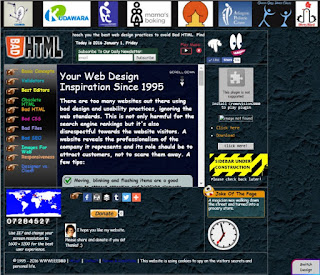A short video about the importance of cleaning the HTML code
We have put together a short film about the bad practices of online publishing and why you should always clean your HTML code before publishing.
Did you know that only one third of regular web publishers are familiar with HTML coding?
But how will the big majority of editors compose their web content anyway?
Some of them use the built-in visual editor of their Content management system.
This is the easiest and most user-friendly way: you don't have full control over your source code but probably you don't even need that.
Others just put their text together using Microsoft Word, Google docs, or other text editing software.
When the article is ready and formatted, images are added and everything looks nice, you can do two things:
First, you can copy the whole content and paste it in the editor of the CMS and save it.
The other way is to save the document as an HTML file and publish this way.
The bad news is both of these methods are bad practices.
To prove this let's check out the code behind the article.
We are scrolling down the source of an HTML document saved by Microsoft Word.
A lot of extra unnecessary code has been added by the editor.
There are many alien classes and IDs, inline styles.
If we remove every unwanted piece (classes, styles, empty tags, spans etc) we end up with a very short and clean code.
And why do we even have to worry about all this?
Well, inline styles overwrite the default stylesheet of the website.
Organized source code is easier to edit and takes up smaller storage space.
And if your source is messy, search engines will be very sad.
They might even punish you for being so lazy.
Never forget to clean your HTML before publishing!
For those who can't listen to the sound here is the excerpt:
Did you know that only one third of regular web publishers are familiar with HTML coding?
But how will the big majority of editors compose their web content anyway?
Some of them use the built-in visual editor of their Content management system.
This is the easiest and most user-friendly way: you don't have full control over your source code but probably you don't even need that.
Others just put their text together using Microsoft Word, Google docs, or other text editing software.
When the article is ready and formatted, images are added and everything looks nice, you can do two things:
First, you can copy the whole content and paste it in the editor of the CMS and save it.
The other way is to save the document as an HTML file and publish this way.
The bad news is both of these methods are bad practices.
To prove this let's check out the code behind the article.
We are scrolling down the source of an HTML document saved by Microsoft Word.
A lot of extra unnecessary code has been added by the editor.
There are many alien classes and IDs, inline styles.
If we remove every unwanted piece (classes, styles, empty tags, spans etc) we end up with a very short and clean code.
And why do we even have to worry about all this?
Well, inline styles overwrite the default stylesheet of the website.
Organized source code is easier to edit and takes up smaller storage space.
And if your source is messy, search engines will be very sad.
They might even punish you for being so lazy.
Never forget to clean your HTML before publishing!


